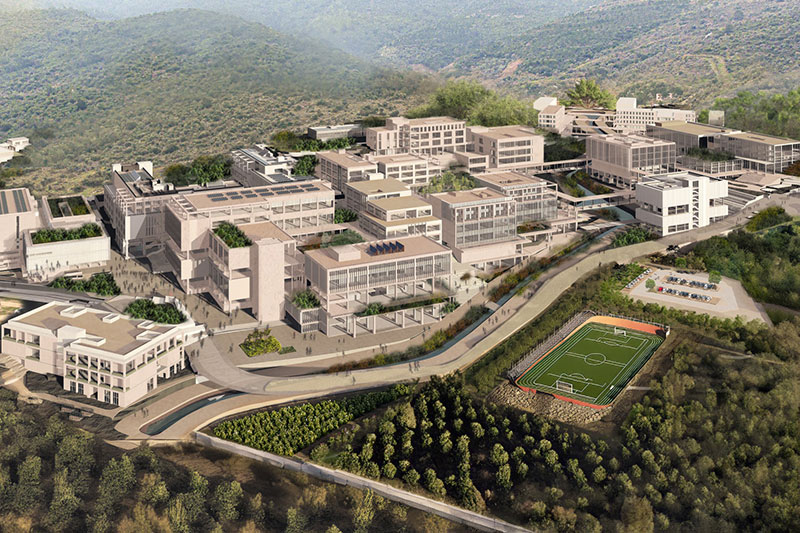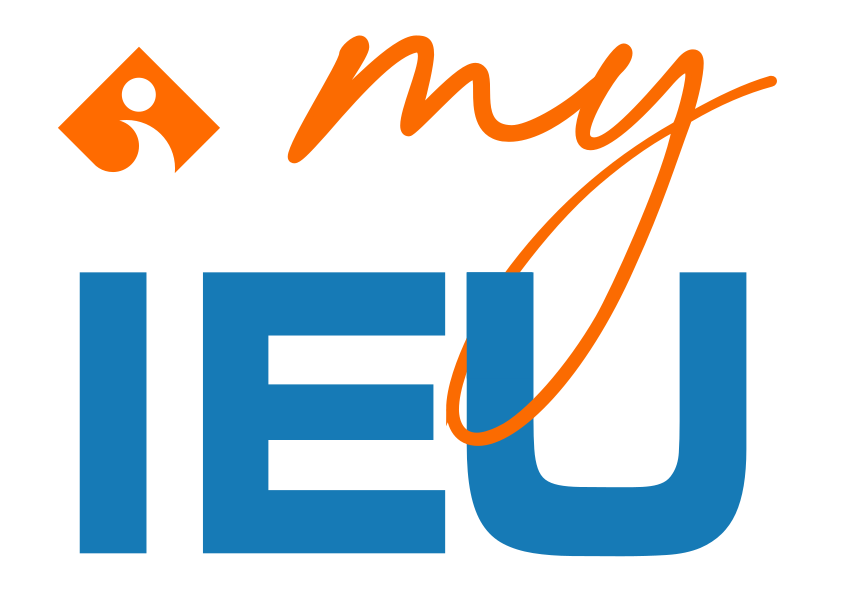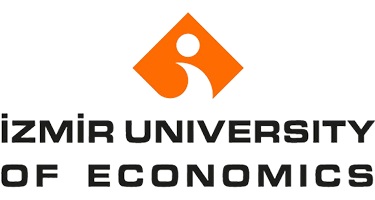ME 305 | Course Introduction and Application Information
| Course Name |
Fluid Mechanics
|
|
Code
|
Semester
|
Theory
(hour/week) |
Application/Lab
(hour/week) |
Local Credits
|
ECTS
|
|
ME 305
|
Fall
|
2
|
2
|
3
|
5
|
| Prerequisites |
|
|||||||||
| Course Language |
English
|
|||||||||
| Course Type |
Required
|
|||||||||
| Course Level |
First Cycle
|
|||||||||
| Mode of Delivery | - | |||||||||
| Teaching Methods and Techniques of the Course | Problem SolvingApplication: Experiment / Laboratory / WorkshopLecture / Presentation | |||||||||
| National Occupation Classification | - | |||||||||
| Course Coordinator | ||||||||||
| Course Lecturer(s) | ||||||||||
| Assistant(s) | ||||||||||
| Course Objectives | It is aimed to be able to define the fluid, make calculations related to viscosity, capillarity and compressibility properties, calculate the forces acting on the fluid at rest, apply energy and momentum analysis to fluids, understand dimensional analysis, similarity issues and solve Navier Stokes equations. | |||||||||||||||||||||||||||||||||||||||||||||||||||||
| Learning Outcomes |
|
|||||||||||||||||||||||||||||||||||||||||||||||||||||
| Course Description | This lesson includes the definition of fluid, its properties, pressure, forces acting on static fluids, energy and momentum equations of fluids, dimensional analysis and similarity concepts, forces acting on moving fluids. | |||||||||||||||||||||||||||||||||||||||||||||||||||||
| Related Sustainable Development Goals | ||||||||||||||||||||||||||||||||||||||||||||||||||||||
|
|
Core Courses |
X
|
| Major Area Courses | ||
| Supportive Courses | ||
| Media and Management Skills Courses | ||
| Transferable Skill Courses |
WEEKLY SUBJECTS AND RELATED PREPARATION STUDIES
| Week | Subjects | Related Preparation | Learning Outcome |
| 1 | Introduction and Basic Concepts | Chapter-1: “Fluid Mechanics: Fundamentals and Applications by Yunus A. Çengel and John M. Cimbala, Third Edition, 2014" | |
| 2 | Properties of Fluids | Chapter-2: “Fluid Mechanics: Fundamentals and Applications by Yunus A. Çengel and John M. Cimbala, Third Edition, 2014" | |
| 3 | Properties of Fluids | Chapter-2: “Fluid Mechanics: Fundamentals and Applications by Yunus A. Çengel and John M. Cimbala, Third Edition, 2014" | |
| 4 | Pressure and Fluid Statics | Chapter-3: “Fluid Mechanics: Fundamentals and Applications by Yunus A. Çengel and John M. Cimbala, Third Edition, 2014" | |
| 5 | Pressure and Fluid Statics | Chapter-3: “Fluid Mechanics: Fundamentals and Applications by Yunus A. Çengel and John M. Cimbala, Third Edition, 2014" | |
| 6 | Pressure and Fluid Statics | Chapter-3: “Fluid Mechanics: Fundamentals and Applications by Yunus A. Çengel and John M. Cimbala, Third Edition, 2014" | |
| 7 | Fluid Kinematics | Chapter-4: “Fluid Mechanics: Fundamentals and Applications by Yunus A. Çengel and John M. Cimbala, Third Edition, 2014" | |
| 8 | Midterm | ||
| 9 | Bernoulli and Energy Equations | Chapter-5: “Fluid Mechanics: Fundamentals and Applications by Yunus A. Çengel and John M. Cimbala, Third Edition, 2014" | |
| 10 | Bernoulli and Energy Equations | Chapter-5: “Fluid Mechanics: Fundamentals and Applications by Yunus A. Çengel and John M. Cimbala, Third Edition, 2014" | |
| 11 | Momentum Analysis in Flow Systems | Chapter-6: “Fluid Mechanics: Fundamentals and Applications by Yunus A. Çengel and John M. Cimbala, Third Edition, 2014" | |
| 12 | Momentum Analysis in Flow Systems | Chapter-6: “Fluid Mechanics: Fundamentals and Applications by Yunus A. Çengel and John M. Cimbala, Third Edition, 2014" | |
| 13 | Dimensional Analysis and Similarity | Chapter-7: “Fluid Mechanics: Fundamentals and Applications by Yunus A. Çengel and John M. Cimbala, Third Edition, 2014" | |
| 14 | Navier Stokes Equations | Chapter-9: “Fluid Mechanics: Fundamentals and Applications by Yunus A. Çengel and John M. Cimbala, Third Edition, 2014" | |
| 15 | Review | ||
| 16 | Final exam |
| Course Notes/Textbooks | Fluid Mechanics: Fundamentals and Applications by Yunus A. Çengel and John M. Cimbala, Third Edition, 2014 |
| Suggested Readings/Materials |
EVALUATION SYSTEM
| Semester Activities | Number | Weigthing | LO 1 | LO 2 | LO 3 | LO 4 | LO 5 |
| Participation | |||||||
| Laboratory / Application |
5
|
25
|
X | X | X | X | X |
| Field Work | |||||||
| Quizzes / Studio Critiques | |||||||
| Portfolio | |||||||
| Homework / Assignments | |||||||
| Presentation / Jury | |||||||
| Project | |||||||
| Seminar / Workshop | |||||||
| Oral Exams | |||||||
| Midterm |
1
|
35
|
X | X | X | ||
| Final Exam |
1
|
40
|
X | X | X | X | X |
| Total | 3 | 3 | 3 | 2 | 2 |
| Weighting of Semester Activities on the Final Grade |
6
|
60
|
| Weighting of End-of-Semester Activities on the Final Grade |
1
|
40
|
| Total |
ECTS / WORKLOAD TABLE
| Semester Activities | Number | Duration (Hours) | Workload |
|---|---|---|---|
| Theoretical Course Hours (Including exam week: 16 x total hours) |
16
|
2
|
32
|
| Laboratory / Application Hours (Including exam week: '.16.' x total hours) |
16
|
2
|
32
|
| Study Hours Out of Class |
14
|
2
|
28
|
| Field Work |
0
|
||
| Quizzes / Studio Critiques |
0
|
||
| Portfolio |
0
|
||
| Homework / Assignments |
0
|
||
| Presentation / Jury |
0
|
||
| Project |
0
|
||
| Seminar / Workshop |
0
|
||
| Oral Exam |
0
|
||
| Midterms |
1
|
26
|
26
|
| Final Exam |
1
|
32
|
32
|
| Total |
150
|
COURSE LEARNING OUTCOMES AND PROGRAM QUALIFICATIONS RELATIONSHIP
|
#
|
PC Sub | Program Competencies/Outcomes |
* Contribution Level
|
||||
|
1
|
2
|
3
|
4
|
5
|
|||
| 1 |
To have adequate knowledge in Mathematics, Mathematics based physics, statistics and linear algebra and Mechanical Engineering; to be able to use theoretical and applied information in these areas on complex engineering problems. |
-
|
-
|
-
|
-
|
-
|
|
| 2 |
To be able to identify, define, formulate, and solve complex Mechanical Engineering problems; to be able to select and apply proper analysis and modeling methods for this purpose. |
-
|
-
|
-
|
X
|
-
|
|
| 3 |
To be able to design a thermal and mechanical system, process, device or product under realistic constraints and conditions, in such a way as to meet the requirements; to be able to apply modern design methods for this purpose. |
-
|
-
|
-
|
-
|
-
|
|
| 4 |
To be able to devise, select, and use modern techniques and tools needed for analysis and solution of complex problems in engineering applications. |
-
|
-
|
-
|
-
|
-
|
|
| 5 |
To be able to design and conduct experiments, gather data, analyze and interpret results for investigating complex engineering problems or Mechanical Engineering research topics. |
-
|
-
|
-
|
X
|
-
|
|
| 6 |
To be able to work efficiently in Mechanical Engineering disciplinary and multi-disciplinary teams; to be able to work individually. |
-
|
X
|
-
|
-
|
-
|
|
| 7 |
To be able to communicate effectively in Turkish, both orally and in writing; to be able to author and comprehend written reports, to be able to prepare design and implementation reports, to present effectively, to be able to give and receive clear and comprehensible instructions. |
-
|
-
|
-
|
-
|
-
|
|
| 8 |
To have knowledge about global and social impact of engineering practices on health, environment, and safety; to have knowledge about contemporary issues as they pertain to engineering; to be aware of the legal ramifications of engineering solutions. |
-
|
-
|
-
|
-
|
-
|
|
| 9 |
To be aware of ethical behavior, professional and ethical responsibility; to have knowledge about standards utilized in engineering applications. |
-
|
-
|
-
|
-
|
-
|
|
| 10 |
To have knowledge about industrial practices such as project management, risk management, and change management; to have awareness of entrepreneurship and innovation; to have knowledge about sustainable development. |
-
|
-
|
-
|
-
|
-
|
|
| 11 |
To be able to collect data in the area of Mechanical Engineering, and to be able to communicate with colleagues in a foreign language. |
-
|
-
|
-
|
-
|
-
|
|
| 12 |
To be able to speak a second foreign language at a medium level of fluency efficiently. |
-
|
-
|
-
|
-
|
-
|
|
| 13 |
To recognize the need for lifelong learning; to be able to access information, to be able to stay current with developments in science and technology; to be able to relate the knowledge accumulated throughout the human history to Mechanical Engineering. |
-
|
-
|
-
|
-
|
-
|
|
*1 Lowest, 2 Low, 3 Average, 4 High, 5 Highest

IZMIR UNIVERSITY OF ECONOMICS GÜZELBAHÇE CAMPUS
DetailsGLOBAL CAREER
As Izmir University of Economics transforms into a world-class university, it also raises successful young people with global competence.
More..CONTRIBUTION TO SCIENCE
Izmir University of Economics produces qualified knowledge and competent technologies.
More..VALUING PEOPLE
Izmir University of Economics sees producing social benefit as its reason for existence.
More..


